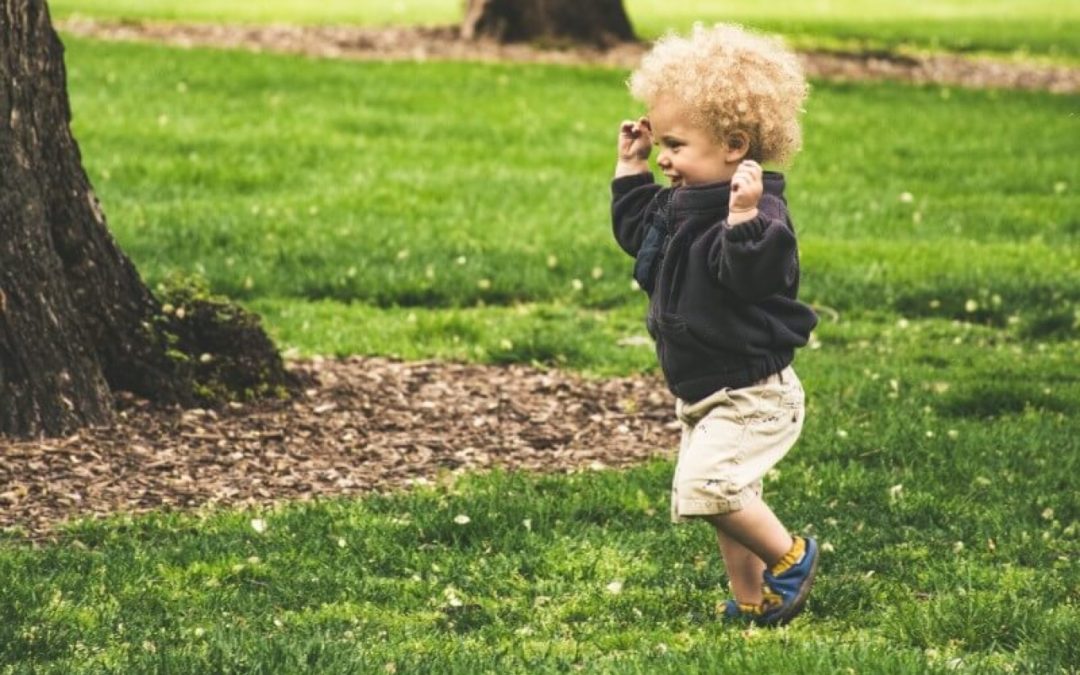While your baby is learning to walk inside, it’s recommended that you leave them to go barefoot. This helps them develop their balance and doesn’t restrict the development of their feet. But when they’re ready to get going outside, it’s time for another milestone: baby’s first shoes.
How Quickly Do Babies’ Feet Grow?
Your toddler is likely to need two pairs of shoes each year while they are in an early stage of development because their feet grow so quickly. Aim to have your baby’s feet measured every six to eight weeks up to the age of four to make sure their footwear is still the best fit for them.
The NHS emphasises the importance of correctly fitting shoes for your little one in their helpful online pregnancy and baby guide.
Where Should You Go to Buy Baby’s First Shoes?
Make sure you go to a shoe shop or shoe department that has a specialist service for selling baby shoes. The range of appropriate footwear will be better, and staff will be trained in measuring wriggly little ones!
The length and width of their feet will need to be measured to ensure the new shoes are exactly right. This service isn’t provided at all footwear outlets, so do some research before you go out. Major UK retailers such as John Lewis and Clarks are a good place to start.
What to Consider When Choosing Your Baby’s First Shoes
While it may be tempting to buy your baby fashionable shoes, you need to be practical when selecting their first pair of walking shoes. Here are the main six areas that should be considered:
1. The right size
As we know, babies’ feet grow rapidly, so this is probably the hardest bit to get right. The length of the shoe should be big enough that there is around a 1cm gap between the longest toe and the end of the shoe, and wide enough so the feet slide into the shoe easily without rubbing. Too big, and when your little one walks you’ll be able to see their feet sliding forwards. Make sure you allow enough time on your shopping trip for baby to walk around in different styles before making a purchase.
2. Socks or no socks?
In our climate, it’s likely your baby will be wearing socks most of the time, so make sure you have a pair with you for them to wear while trying on shoes.
3. The right kind of support
The shoe needs to be firm enough to give your baby the support they need underfoot while walking around outdoors, but not so stiff it will impede their flexibility. Some more fashionable designs won’t be supportive enough, whereas more formal styles can be stiff to wear for long periods.
4. Good grip
Make sure the sole has a non-slip finish with bumps or ridges to help baby keep their balance on uneven or slippery ground.
5. Breathable material
Avoid plastic or man-made fibres in your baby’s first shoes, as they can result in sweaty feet, promoting fungal infections such as athlete’s foot. Instead, look to leather or canvas for a more breathable design.
6. Comfortable fastenings
Look for a style with a Velcro or buckle fastening, which will be easy to get on and off, and soft against their skin. Laces and metal fastenings are probably worth saving for when they’re older.
If you’re concerned about any symptoms your little one displays as they get more mobile, visit your general health practitioner or make an appointment with a podiatrist. Every child develops differently, but if you’re concerned, contact the friendly team at Feet By Pody and make an appointment for one of our London podiatry clinics.

